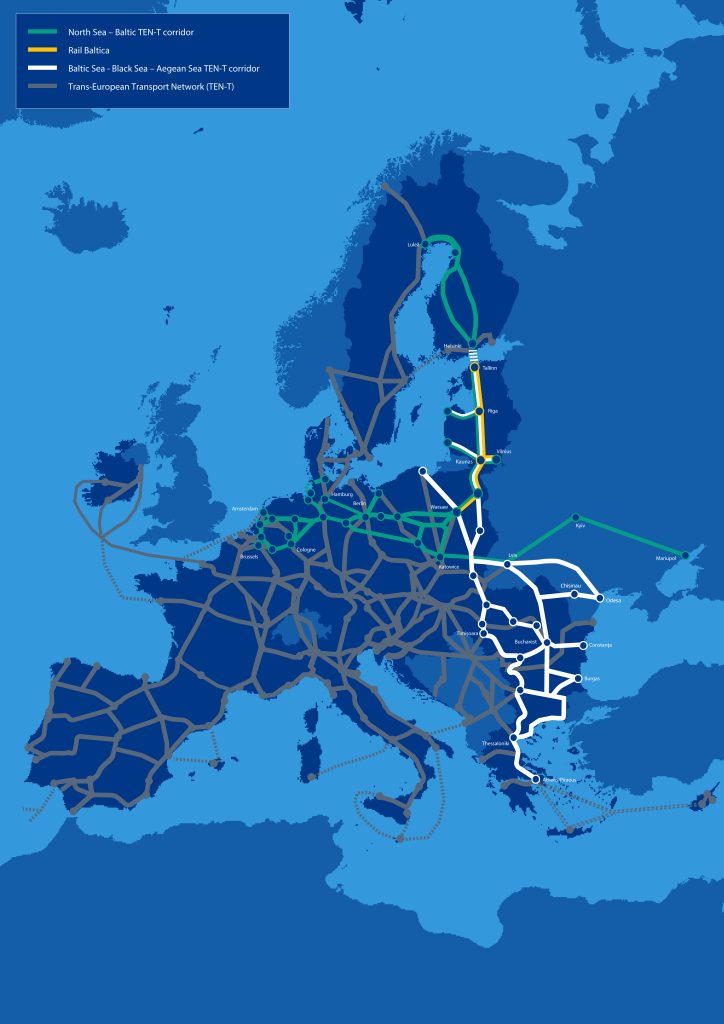The European Commission has today adopted an implementing decision setting out key milestones and deadlines for the completion of Rail Baltica, a flagship cross-border railway infrastructure project that will significantly enhance connectivity within the European Union. Unanimously supported by all Member States, this decision marks a major step toward fully integrating Estonia, Latvia, and Lithuania into the European railway network by 2030.
 Rail Baltica is a priority TEN-T project connecting Poland, the Baltic States, and Finland indirectly, with links to Ukraine. Using the European standard gauge, it creates a new North–South rail corridor in the Baltic region, fully integrating it into the EU network. The project boosts regional travel, freight efficiency, sustainable transport, and supports EU-NATO military mobility.
Rail Baltica is a priority TEN-T project connecting Poland, the Baltic States, and Finland indirectly, with links to Ukraine. Using the European standard gauge, it creates a new North–South rail corridor in the Baltic region, fully integrating it into the EU network. The project boosts regional travel, freight efficiency, sustainable transport, and supports EU-NATO military mobility.
Highlighting the project’s strategic importance, European Coordinator Catherine Trautmann stated: “Rail Baltica will make it easier for people and goods to travel between the Baltic States and to the rest of the EU. The EU will grow together more closely, for leisure travel, for economic development, and for our common security. In the current geopolitical environment, building Rail Baltica is a necessity.”
Marko Kivila, Chairperson and CEO of RB Rail AS, welcomed the decision, stating: “This is a good signal of the European Union’s commitment to supporting Rail Baltica as a strategic railway transport initiative. It provides us with legal clarity to move forward. While the ambition remains high, we recognize the challenges ahead and are actively exploring alternative strategies to secure the necessary resources. Accelerated decision-making and sustainable financing are now critical to ensure we deliver on this commitment.”
The European Commission has endorsed Rail Baltica’s phased construction plan. Pending unanimous EU Member State approval, the first phase aims to complete a single-track, electrified line from Tallinn to the Lithuania-Poland border by 2030. The full double-track network will follow, depending on funding, with emphasis on connecting key transport hubs. This highlights the urgent need for sustained investment.
See the article on the European Commission’s website.
